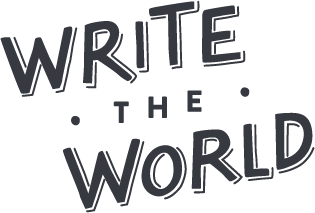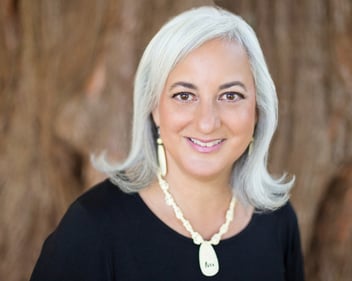The art of flash fiction lies in its ability to make an impact in the briefest way possible. In...

We are excited to introduce Samantha Stone, the Guest Judge for our Flash Fiction Competition! An author, playwright, and educator currently living in Harlem, NY, we spoke with her to learn more about her story as a writer, plus get to know what she's looking for in a winning entry. Check out her expert advice below!
You’ve studied journalism, communications, and playwriting, and today you work as an educator teaching literature and composition writing. How does your diverse background inform what you choose to write about, and which form you choose to write in?
I am always a proponent of writers writing what they know; however, I place equal value in devoting time to learning the craft of writing, which is one of the reasons why I’ve studied it in so many capacities. I have always been enamored with words and their possibilities, so I majored in Journalism and Mass Communications in college, in order to deepen my relationship with language. To that end, my work is sometimes more shaped from form and style rather than topic. I am the kind of writer that likes to focus on character, setting, and theme before plot, so I often begin with a moment, line of dialogue, or other small detail that kick-starts a larger story. That said, I do take a lot of inspiration from my life, as many writers do. Even when writing under a fictional umbrella, nearly everything I write is based on real events, people, or ideas. I try to keep a small notebook with me most of the time, so that I can write down observations, overheard quotes, or anything else that feels funny, inspiring, and most importantly, truthful, that I’d like to put in a story or play someday. Having spent time studying both journalism and playwriting, I’ve learned to use form to help elevate a story and determine when something is meant to inform versus entertain, be read versus be seen, and so on and so forth. For example, if the dialogue is a key component to the piece, it may be a play; if the imagery shines it may be a short story, or even screenplay. The more you practice writing across different forms, the more you know where your story naturally fits.
Similarly, how do you adapt your storytelling approach when moving between genres? What has writing across forms taught you about voice and style?
This is an excellent and important question, and something that I discuss frequently with my students and colleagues. A lot of writers intrinsically know which form feels the most appropriate for their piece, but there are times when this isn’t clear, or times where a piece would thrive in a handful of genres depending on how you approach the storytelling. I adapt my process according to genre mostly through how I prepare to write, and then later, revise the pieces. When I write essays or articles, I typically outline them ahead of time, giving myself a bit of direction right from the start. When writing fiction or scripts, I typically begin with what Anne Lamott refers to as a “sh*##y first draft”: a draft without structure or direction that gets to the heart of what wants to be said, even if it is done so poorly. I like to get all the ideas out on paper so that I learn, through the drafting process, what it is I’m really trying to say.
I’ve noticed over the years that my voice remains consistent among my work but that style and tone changes from piece to piece; the latter concepts reflect the individual piece while the former reflects me. My experiences, point of view, and interests may change or evolve but the way I express myself remains mostly consistent. While I do not think it is necessary, or even preferable that writers write in (too) many forms, I think that experimenting with new genres is a great way to exercise the writing muscle and ease a bad bout of Writer’s Block.
Congratulations on the publication of your book, The Kitchen Magician! You said that you started writing this book to explore the idea of creating joy through small gestures. How do you distill joy, love, and loss — and the confusion of all those big feelings — into short-form fiction like a picture book?
Short-form fiction and children’s books actually have a lot in common. Certainly, the audiences may vary, but the simplicity and need for a complete narrative in only so many words link them together. This style is something that is much harder than it seems to do well. Sure, you may finish an initial draft quickly, since there aren’t many words involved, but that brings on the challenge of being able to make your point in just a couple of paragraphs, pages, or whatever is required of the piece.
In my picture book, I had a lot I wanted to say and only 1000 words to do so (I acknowledge that this is 900 more words than these authors have!) so I grew very comfortable “killing my darlings.” This particular story lived inside me for years. I knew the lesson I wanted it to teach. I also knew I wanted to write it for children. In no world could I submit a novella length children’s story to any agent or publishing house; they wouldn’t read it. Therein lies the challenge. The first draft of the story I’d been writing in my head was way longer on the page than it could (and honestly should) be. I spent weeks paring it down, crossing out lines – even whole paragraphs – with a permanent marker, but kept anything that undoubtedly expressed the kind of joy, love, and response to loss I wanted my readers to feel and react to. I’ve learned in my many years as a writer to trust my gut. I know I can recognize the difference between a line that exists because it does something and a line that exists because it says something. Poetry, flash fiction, children’s books, anything short form needs to say something. It’s a way of trimming the fat because there’s no room for it to exist anyway.
You’ve also created theatre works as a means of shedding light on complex issues through a new lens. For instance, your play, The Third Space Theory, ponders the multiple meanings of privacy, comfortability, and safety. What is your advice for young writers in navigating sophisticated themes and issues, especially with a limited word count?
I think first and foremost, it’s important to not be afraid of the topics you’re writing about. If you’re drawn to a certain idea for whatever reason, that’s a feeling or instinct you need to honor and explore. That being said, I do like to dissuade young writers from writing about mature topics simply because they feel edgy. The edge needs to have intention behind it. If that’s the case (and it usually is) the best thing a writer can do is write from their heart. I tell my students to approach these topics from the same perspective in which they think and talk about them in their life. If they relate to the themes and concepts, explore that. If they are curious about them and how they fit into society, explain why that is. The limited word count definitely challenges a writer here, since there is less time to explain purpose, motivation, or another contextual element pertinent to the piece, but it allows the writer to get to the core of the concept without beating around the bush. One of the main reasons stories exist is to create empathy with a person or community. There is so much happening in this world that everyone, especially young people, has questions about. Asking, and answering these questions, without too much exposition or tangential thinking almost always makes for a successful and memorable story.
What are you looking for in a winning entry? Any other advice for writers who are new to flash fiction?
I’m looking for a story that makes me lean in – something that I want to read more than one time, something I want to talk about with my friends, with other writers, with the person who wrote it. I think the best pieces are the ones that feel the most honest. That is not to say the world of the story needs to look exactly or even anything like our world, but it has to be truthful. Every little detail matters when it comes to setting and character, which are the building blocks of any good piece of writing. You can make any plot engaging if the world and its inhabitants are ones you want to know more about. But in a flash piece, the world needs to be narrow and specific enough that you can meditate on these details with more care than in a larger form.
I’ll reiterate that I think flash fiction is one of the hardest genres to get right, because it is easy to fall into writing traps. When people tell me they want to write in the short form, whether it’s flash fiction, micro memoir, a ten-minute play, I tell them to remember that the length needs to not just satisfy the form but elevate it. Hemingway created one of the most iconic stories in just six words; the brevity is not just impressive but essential to what he was trying to say. I want writers to feel excited by the form, not just willing to play around with it. Leaning into this attention to detail, both in terms of story and structure will help writers make something special.




